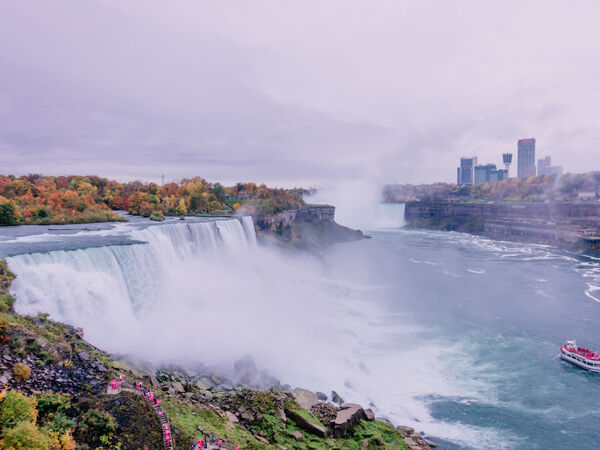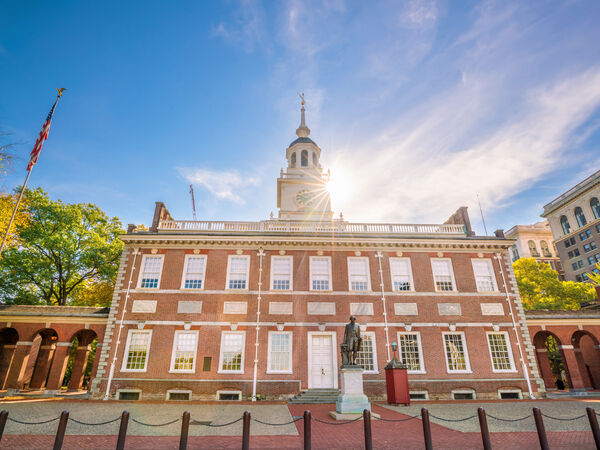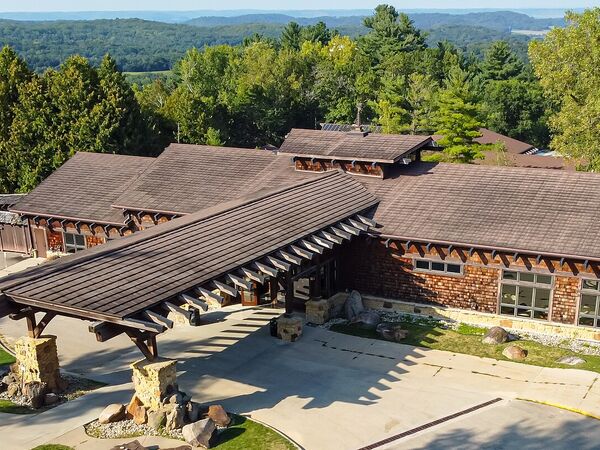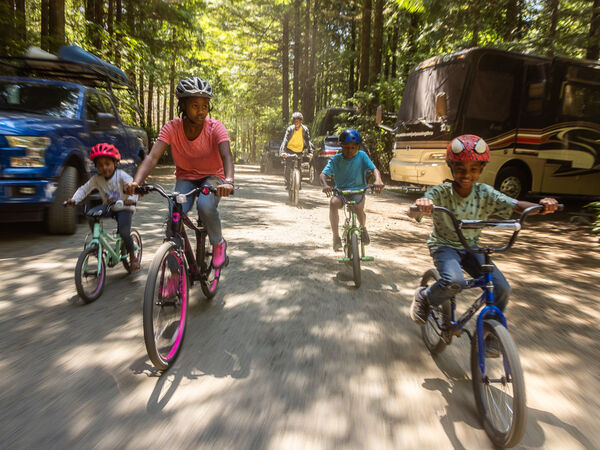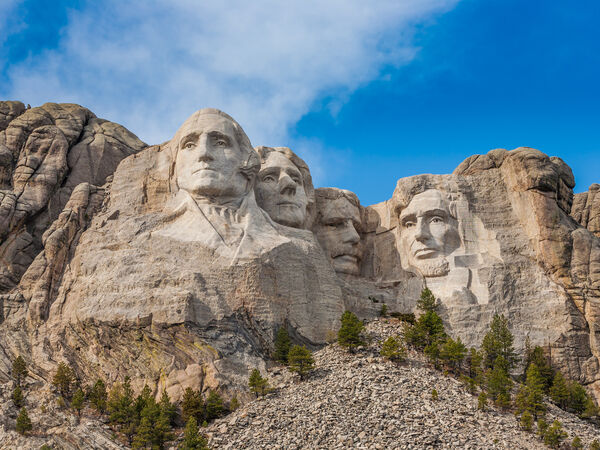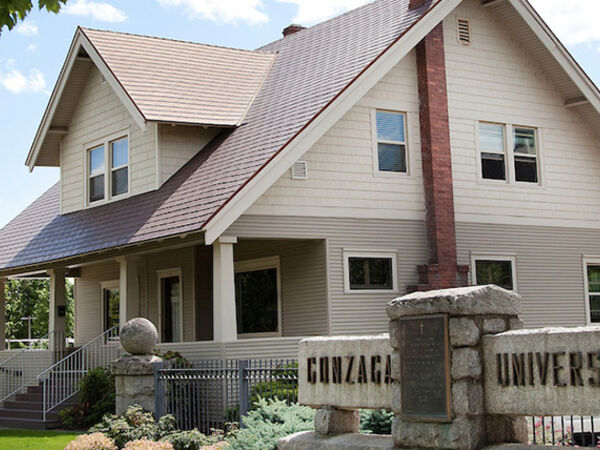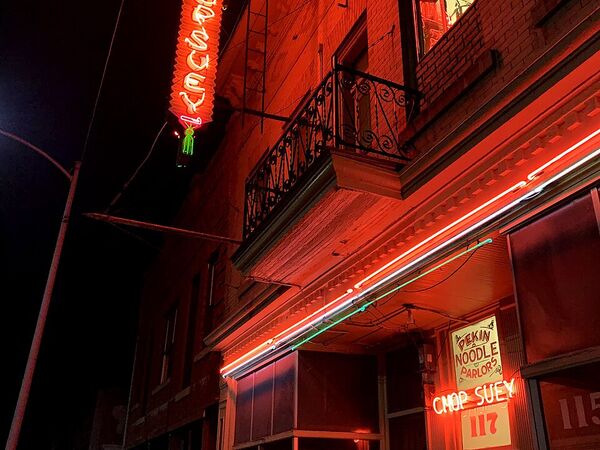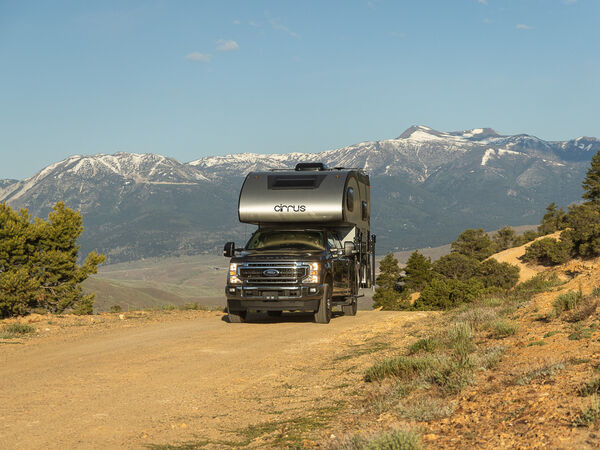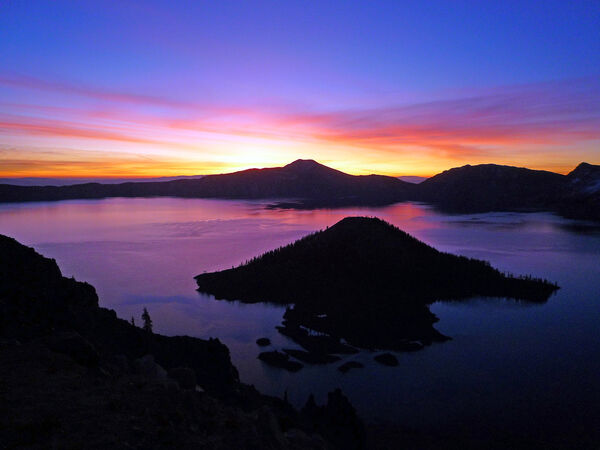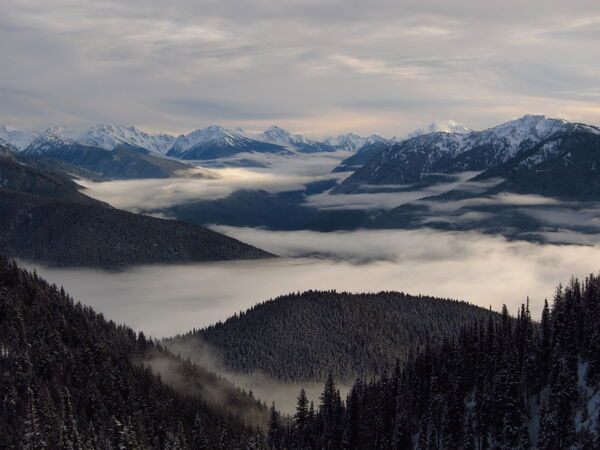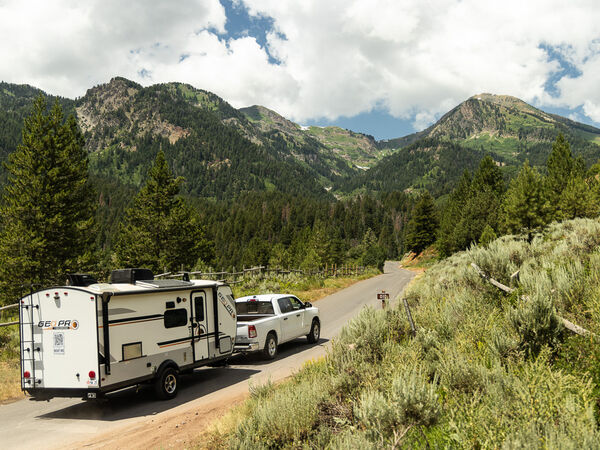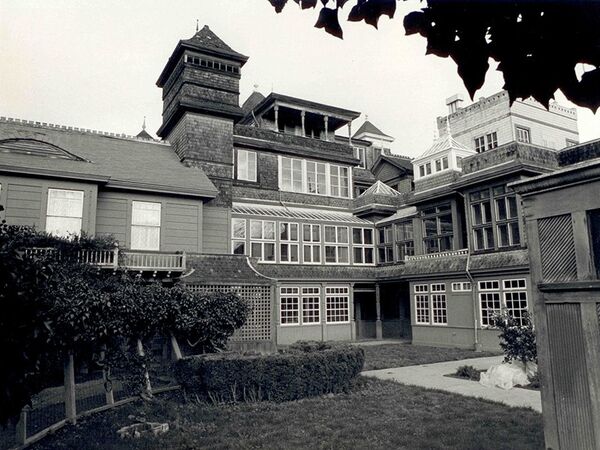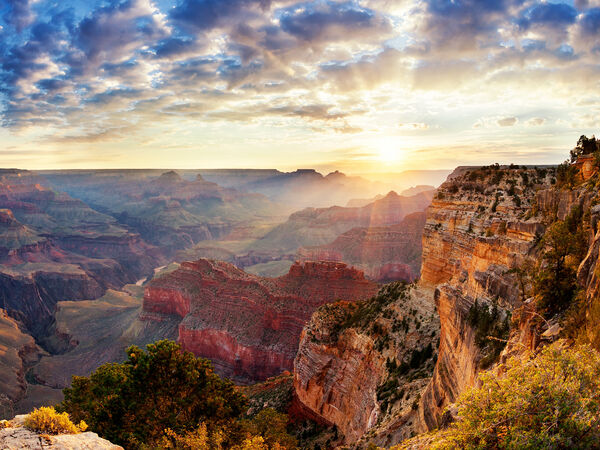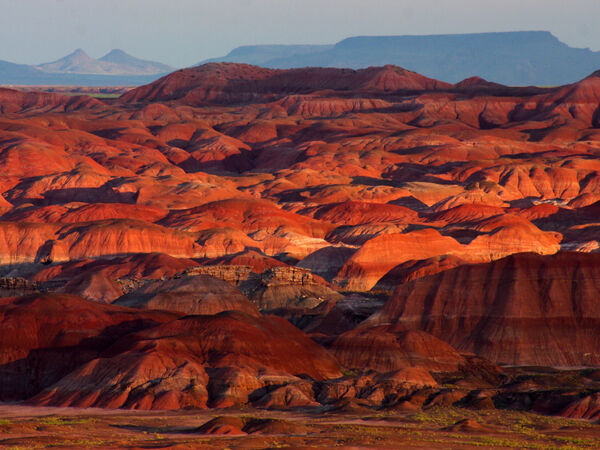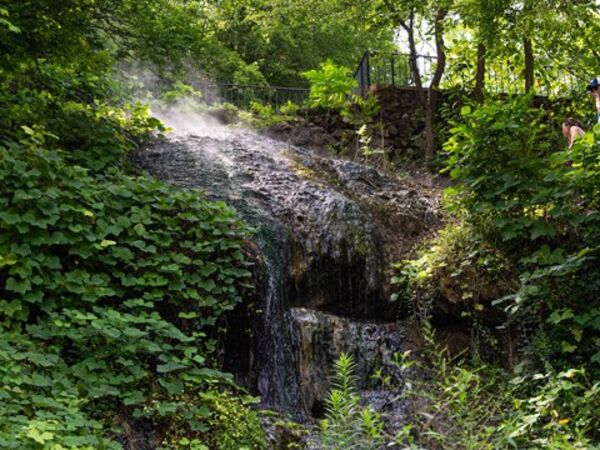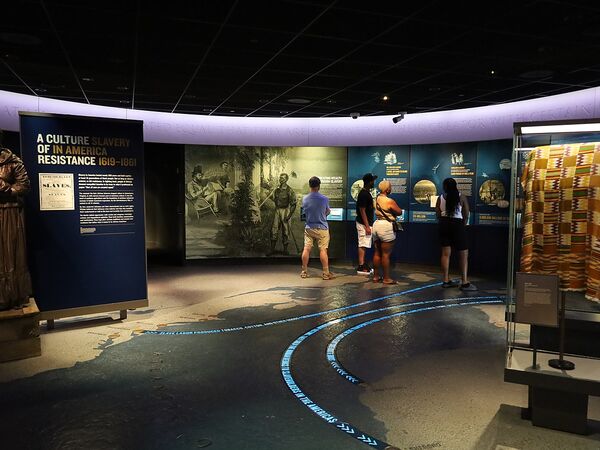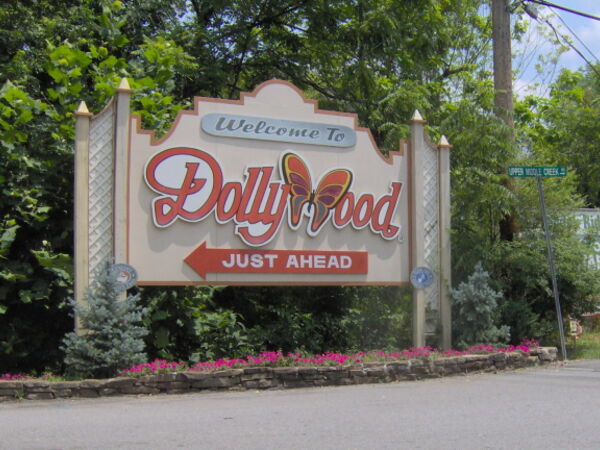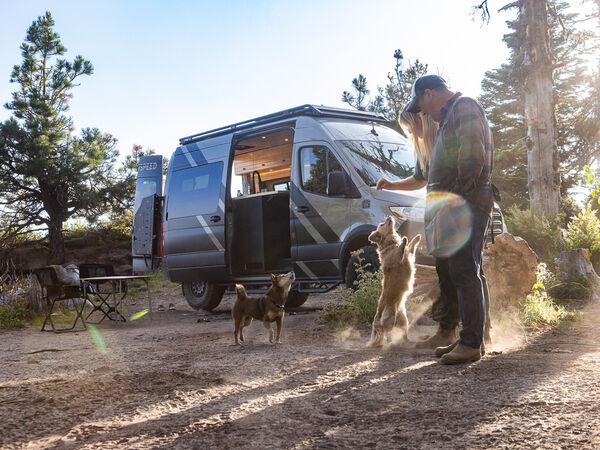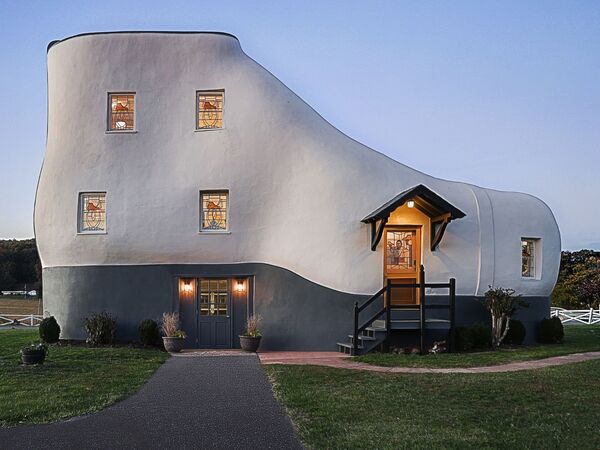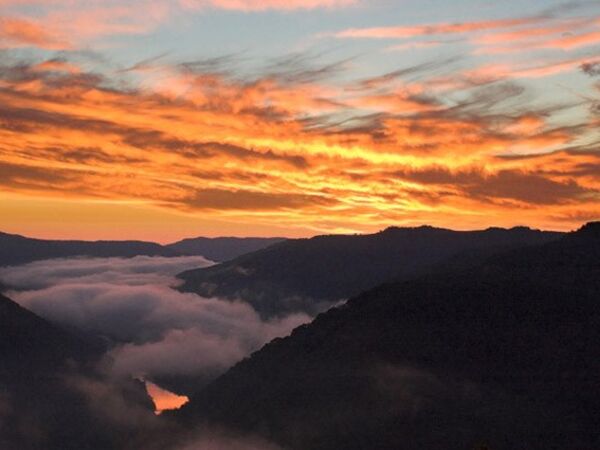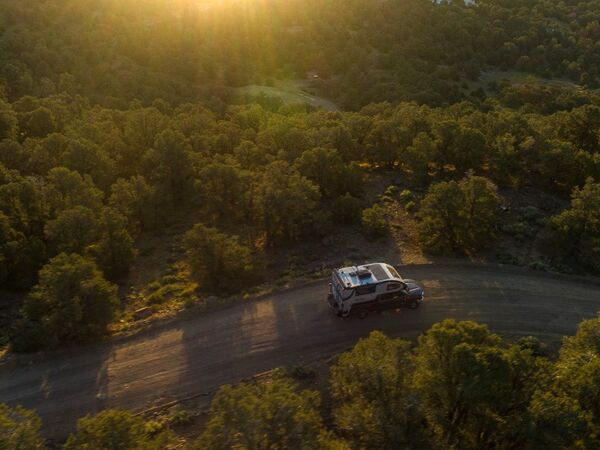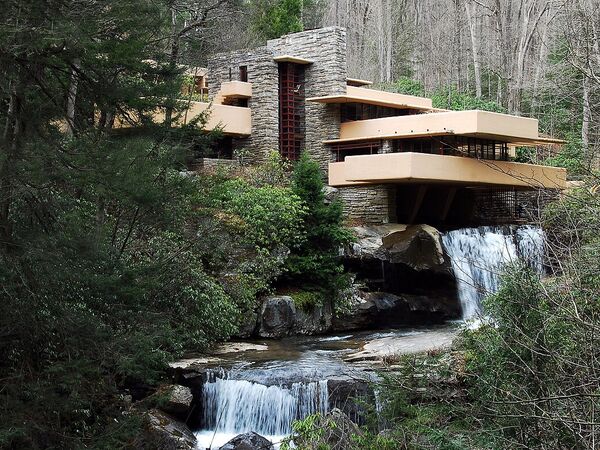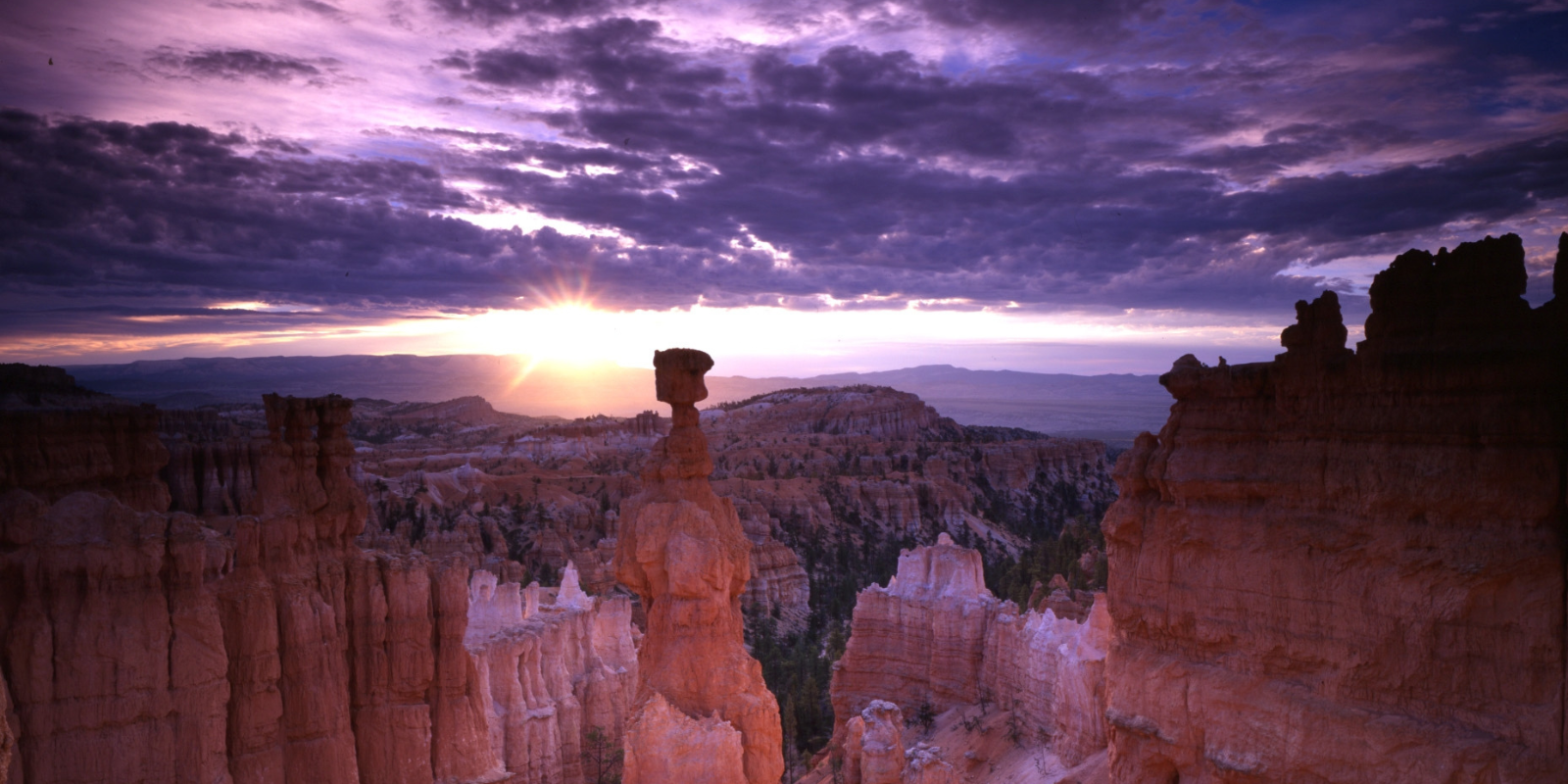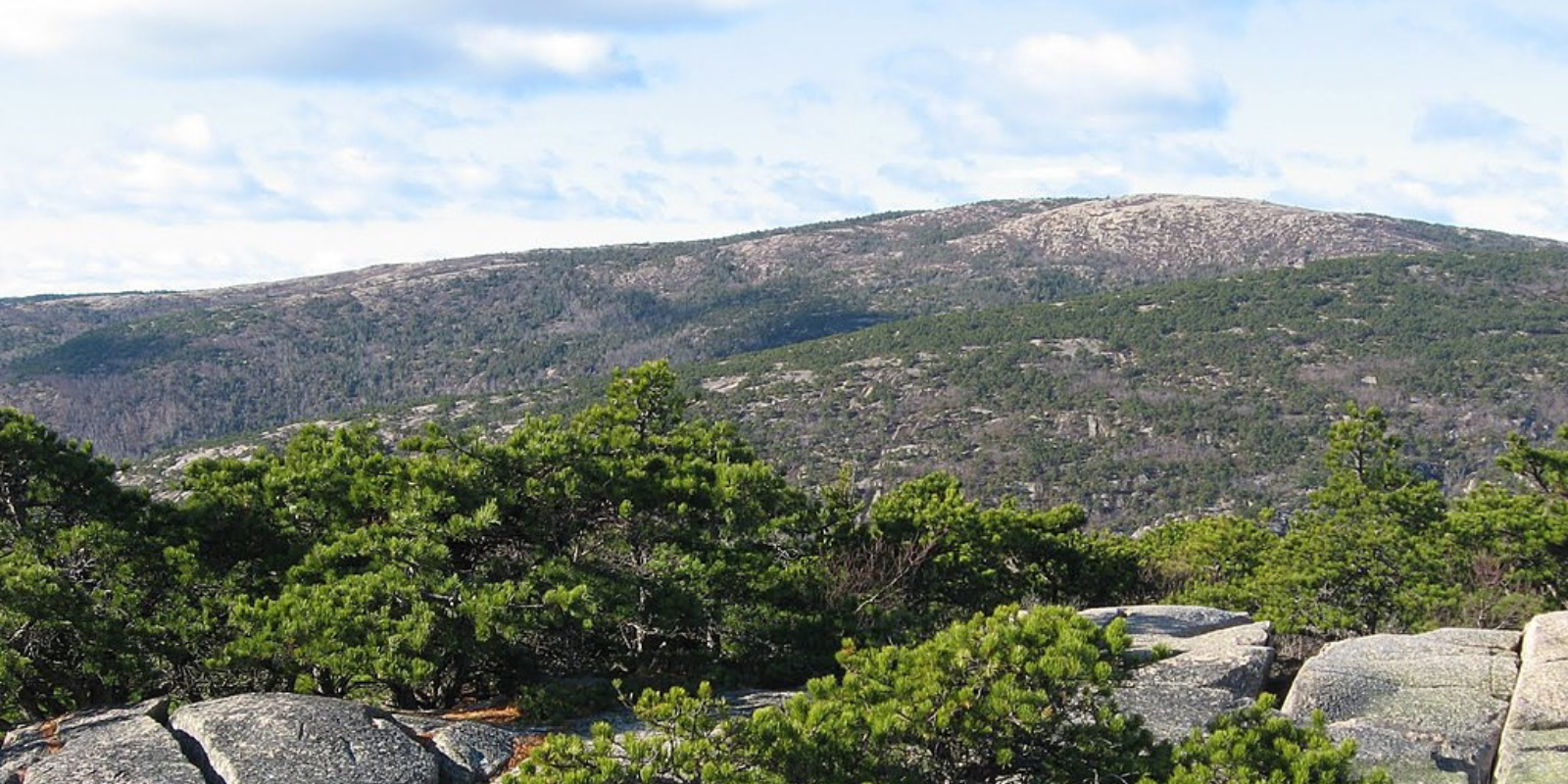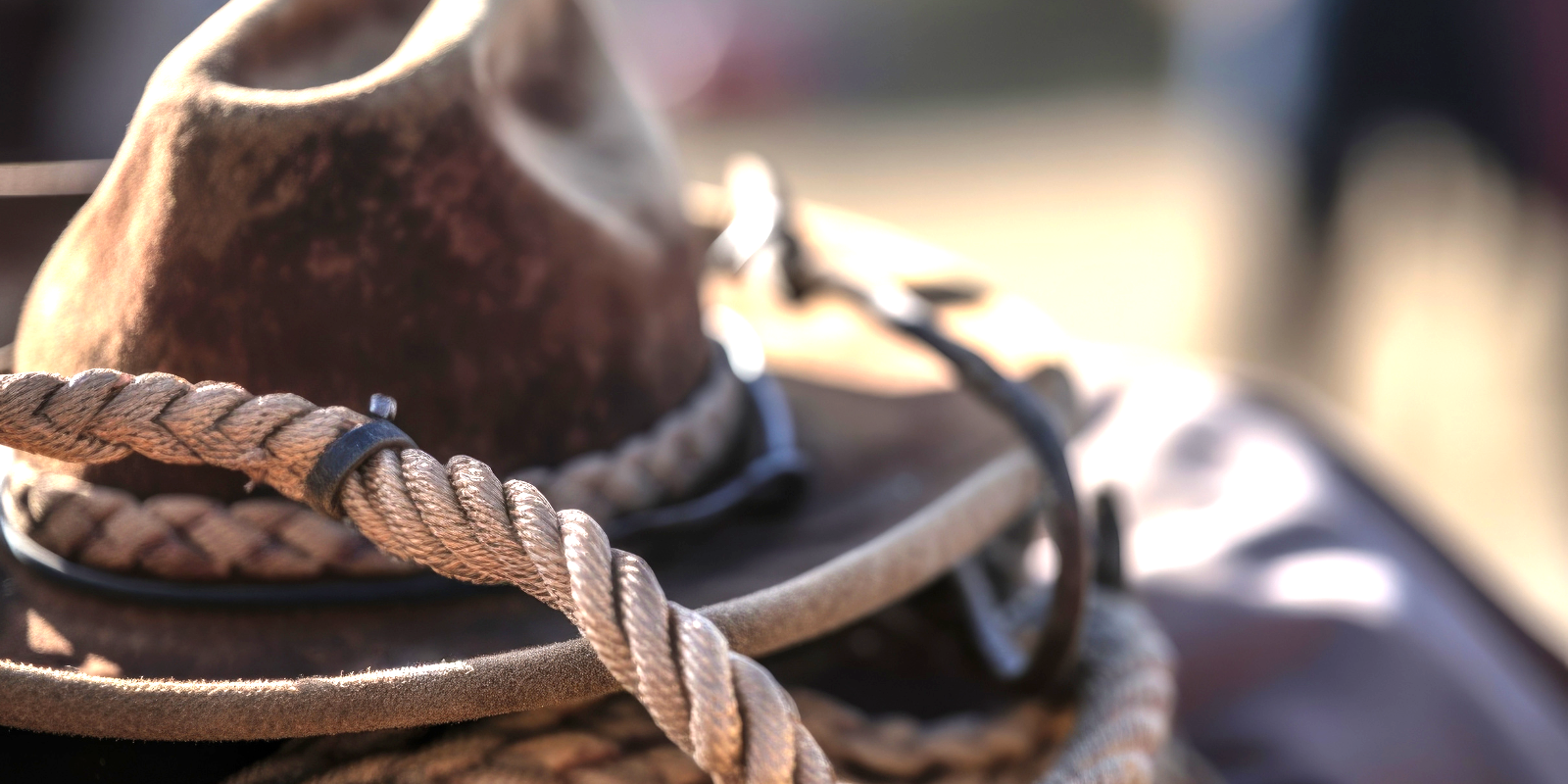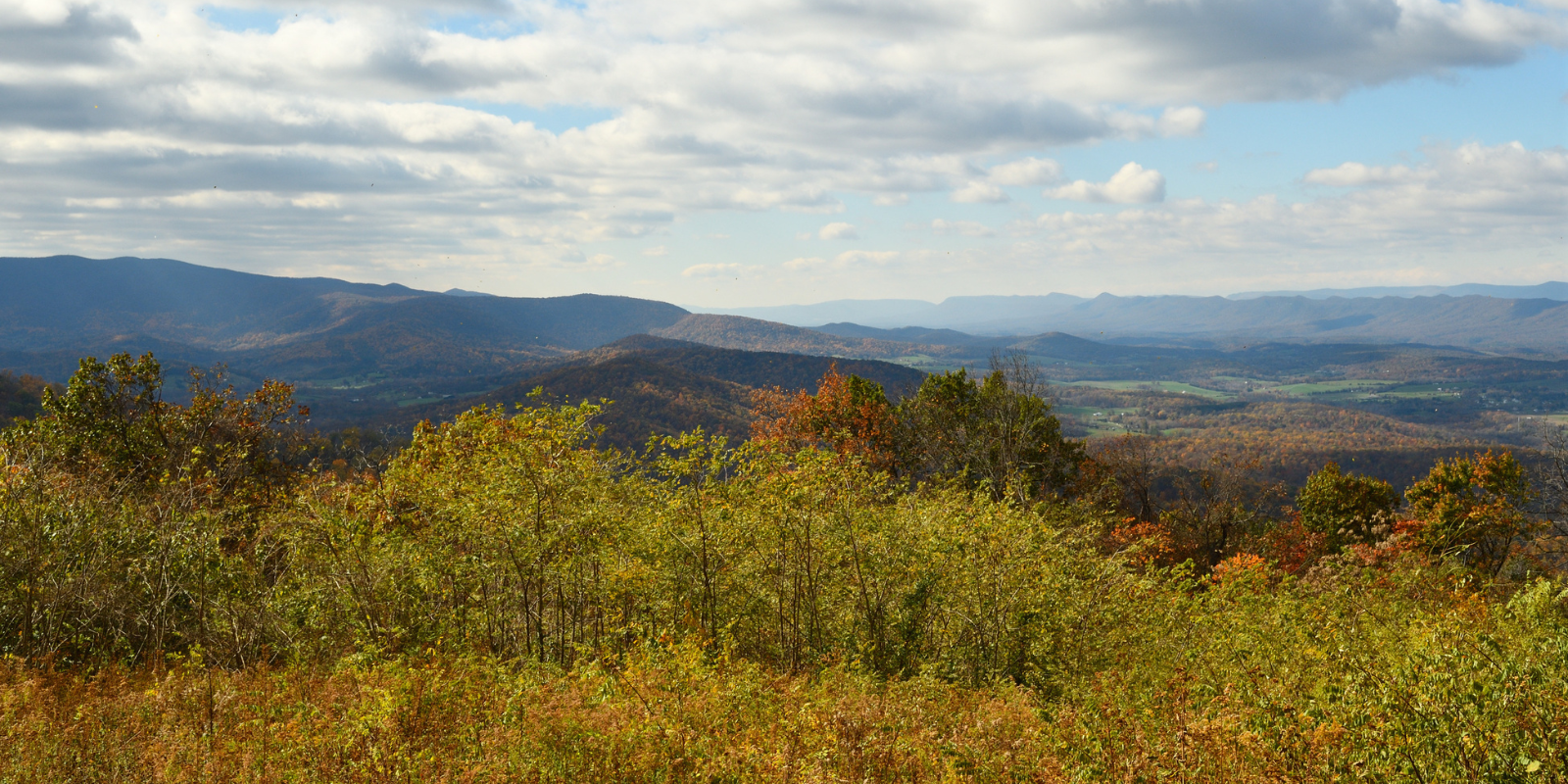Travel Guides
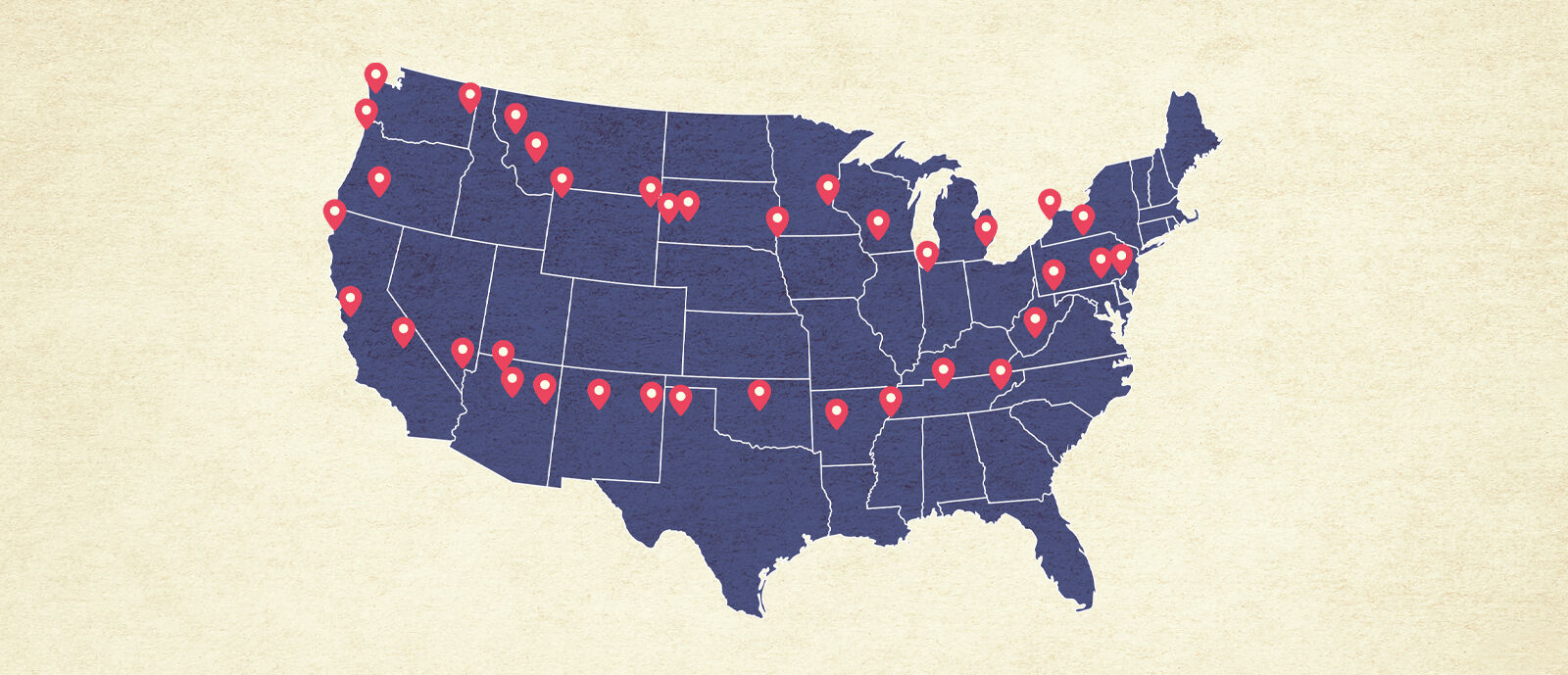
Travel Guides
RV Across America: An Epic Six-Month Road Trip by RV
Celebrate the United States' 250th birthday with this six-month RV road trip that takes you on a journey through the nation's history, one historical landmark at a time.
Overview
Six months may seem like a long RV trip, but you could be on the road for six years and still not see everything from sea to shining sea. In honor of America’s 250th birthday, this RV trip offers a broad range of quintessentially American attractions; from the storied rooms of Independence Hall, to Midwestern sand dunes, on through the desolate Badlands, and back again through the steamy South, this trip will give you a new appreciation for how much the U.S. has been able to accomplish in the past 250 years—and hopefully leave you, like a true American, ready for your next big adventure.
Northeast to Upper Midwest
Independence Hall National Historical Park, PA
Begin your trip where the U.S. officially became an independent nation: Independence Hall, in Philadelphia, Pennsylvania. It was here—in this Georgian, red brick former State House—that the Second Continental Congress met to sign the Declaration of Independence in 1776, and create the Constitution 11 years later. The Liberty Bell, which once resided in the Hall’s original wooden steeple, is on permanent display nearby.
Corning Museum of Glass, NY
The 10-acre Corning Museum of Glass campus was established in south central New York in 1951. With more than 50,000 objects spanning 3,500 years of glass-making technology and artistry, visitors should be prepared to be dazzled with live glass-blowing demonstrations, make-your-own workshops, and a gift shop stocked with sparkling souvenirs.
Niagara Falls, NY
Three of the world’s most-famous waterfalls can be found at the southern end of Niagara Gorge on the border of New York State and Ontario, Canada—and two out of the three, the Bridal and American Falls, are on the U.S. side. The country’s oldest state park and once-popular honeymoon destination offers many ways to enjoy its famous natural wonder, including hiking trails, a scenic trolley, aquarium, observation tower, Maid of the Mist boat cruise, and Cave of the Winds experience (yes, you will get wet, so bring proper footwear).
Henry Ford Museum of American Innovation, MI
Where else can you see a 1952 Wienermobile, Buckminster Fuller’s circular, aluminum Dymaxion House, the plane Richard Byrd flew over the South Pole, or the bus where Rosa Parks made her stand by staying seated? See all of this and more at the Dearborn, Michigan, history complex that also includes Greenfield Village (home to Thomas Edison’s Menlo Park laboratory) and the Ford Rouge Factory Tour.
Indiana Dunes National Park, IN
This breathtaking natural expanse of prairies, wetlands, and sand dunes along 15 miles of Lake Michigan coast became the nation’s 61st national park in 2019. While nature is undoubtedly the star here, don’t miss the stunning collection of five Century of Progress Homes from the 1933 Chicago World’s Fair, which sit along Lake Shore Drive; although they are privately owned and in various stages of rehabilitation, an annual tour of the landmarks is offered on the last weekend in September.
The House on the Rock, WI
Nothing can prepare you for the opulence and abundance to be found in every nook and cranny of Spring Green, Wisconsin’s House on the Rock. Loosely inspired by Frank Lloyd Wright’s Taliesin nearby, the sprawling complex houses a collection of themed spaces, gardens, art installations, and antiques, including an infinity room, a 200-foot-long sea creature, and a carousel outfitted with 20,000 lights.
Mall of America, MN
There’s nothing more American than the mall, and in 1992 Bloomington, Minnesota, became home to the largest one in the U.S. (and Western Hemisphere). Shop until you drop across 5,600,000 square feet of retail space, which comprises more than 500 stores, a food court, aquarium, minigolf courses, rides, and more than 30,000 live plants.
Tripoint, IA/MN/SD
Although there are many places in the U.S. where you can be in several states at once, the intersection of Iowa, Minnesota, and South Dakota is one of only a handful located on a public road. Marked with a small brass pin (in the middle of an active road), there is a monument off to the side so visitors can safely document their feat.
Where to Camp:
West Chester/Philadelphia KOA Holiday: 1659 Embreeville Rd, Coatesville, PA 19320
Finger Lakes RV Resort: 3645 Tichenor Rd, Hector, NY 14841
HTR Niagara: 2659 Whitehaven Rd, Grand Island, NY 14072
Dunewood Campground: 645 Broadway, Beverly Shores, IN 46301
Kamp Dels: 14842 Sakatah Lake Rd, Waterville, MN 56096
Great Plains / Black Hills to Yellowstone
Wall Drug Store, SD
The city of Wall, South Dakota, is no longer known as “the geographical center of nowhere,” thanks to its proximity to Mount Rushmore and Wall Drug, a store, cafe, pharmacy, and classic tourist attraction. More than 2 million people a year stop to stretch their legs, take photos with one of several large fiberglass animals, or house a few handmade donuts.
Mount Rushmore National Monument, SD
South Dakota is full of natural beauty, but more than 2 million people flock to the Black Hills every year for a man made attraction: Mount Rushmore National Monument. A century after its conception, the 60-foot-tall president heads (featuring George Washington, Thomas Jefferson, Theodore Roosevelt, and Abraham Lincoln) have become instantly-recognizable icons of roadside America.
Prairie Dog Town, WY
Devil’s Tower National Monument may be named for its signature, soaring geological feature, but the park is beloved for some of its tiniest residents. Home to more than 600 diminutive “dogs,” a 40-acre expanse near the Belle Fourche River offers visitors a chance to see these adorable (and ecologically important) burrowing ground squirrels from your vehicle or select hiking trails.
Yellowstone National Park, WY/MT/ID
Established in 1872, Yellowstone was the nation’s first national park—and there are plenty of reasons why you never forget your first. Spanning three states (Wyoming, Montana, and Idaho), the more than 2-million-acre UNESCO World Heritage Site is home to the Old Faithful geyser, free-ranging herds of bison and elk, grizzly bears, and the largest (dormant) super volcano in North America.
Pekin Noodle Parlor, MT
Considered to be one of the oldest-operating Chinese restaurants in the U.S., Butte, Montana’s Pekin Noodle Parlor has been attracting hungry miners and diners with its chop suey, chow mein, Wonton soup, and flickering neon sign for more than a century. Built in 1909 (and in its current location since 1911), the restaurant was named an American Classic by the James Beard Foundation in 2023.
Garden of One Thousand Buddhas, MT
After filling up on Chinese cuisine, head northwest for a taste of Tibet near Arlee, Montana. The Garden of One Thousand Buddhas is just that—a 10-acre spiritual site founded by a Tibetan Buddhist that was completed in 2015 with the placement of the 1000th Buddha.
Bing Crosby House, WA
Long before he crooned “White Christmas,” Washington native Bing Crosby attended Spokane’s Gonzaga University with aspirations of being a lawyer; thankfully, he became a singer and actor instead. Now part of the University, Crosby’s childhood home houses more than 200 artifacts from the entertainer’s storied career, including his one Academy Award (nominated for best actor three times, he took home the gold in 1944 for Going My Way).
Where to Camp:
Rafter J Bar Ranch: 12325 Rafter J-Bar Rd, Hill City, SD 57745
Fishing Bridge RV Park: 22 Fishing Bridge RV Park Rd, Yellowstone National Park, WY 82190
Butte KOA Journey: 1601 Kaw Ave, Butte, MT 59701
KOA Spokane Journey: 3025 N Barker Rd, Spokane Valley, WA 99027
Pacific Northwest & Cascade
Olympic National Park, WA
There is no better place to soak in the beauty of the Pacific Northwest’s various ecosystems than Olympic National Park. Spanning nearly a million acres, the 25th-most-visited national park boasts diverse natural features such as rocky coasts, glaciers, snowy mountain peaks, and temperate rainforests, making it feel like several parks rolled into one.
Haystack Rock, OR
Located along Oregon’s Pacific Coast 80 miles west of Portland, the 235-foot-tall basalt Haystack Rock was formed by lava flows more than 15 million years ago. Although its formation predates social media by more than a few millennia, there’s no denying that this region—with its tide pools teeming with starfish, sea anemone, and crabs—is infinitely picturesque.
Crater Lake National Park, OR
Named for its scenic body of water (the deepest in the U.S.), Crater Lake is Oregon’s only national park. Formed by the collapse of Mount Mazama nearly 8,000 years ago, the volcanic expanse of blue plunges down 1,949 feet at its deepest point.
McKinleyville Totem Pole, CA
Originally carved in 1961 from a single, 500-year-old redwood tree, the 160-foot-tall McKinleyville totem pole claimed to be the world’s largest (although according to the Guiness Book of World Records, a 173-foot Canadian pole comprising two pieces of wood holds the title). In 2023, the pole’s top three animals were removed due to rot, but even the slightly shorter pole is still worthy of a pilgrimage.
Winchester Mystery House, CA
Was the widow of a firearm magnate trying to keep angry spirits at bay with constant construction or was she simply a burgeoning architect trying to combat boredom? While we may never know the true motivations behind Sarah Winchester’s incessant tinkering, her never-completed mansion in San Jose, California, has been a tourist attraction since shortly after her death in 1922.
Sequoia National Park, CA
Home to the General Sherman Tree—the largest tree on Earth (by volume)—84 percent of Sequoia and adjoining Kings Canyon National Park is a designated wilderness and thus accessible only on foot or horseback.
In addition to five of the world’s ten largest trees, the park’s other outsized features include Mount Whitney, the tallest mountain in the contiguous U.S., and California’s two longest caves, Lilburn and Crystal (the former is managed for research purposes, but the latter is open to the public).
Hoover Dam, NV/AZ
This massive feat of engineering was the highest dam in the world when it was completed in 1935. Nearly 100 years later, the concrete arch-gravity dam still dazzles, holding back the largest man-made lake in the U.S., protecting southern California and Arizona from floods, providing water for field irrigation and power to several cities, including Los Angeles. And, it’s a bonafide tourist attraction, with more than one million people taking the dam tour each year.
Where to Camp:
Kalaloch Campground: Forks, WA 98331
Mazama Campground: OR-62, Crater Lake, OR 97604
Sequoia RV Ranch: 43490 N Fork Dr, Three Rivers, CA 93271
Lake Mead RV Village: 268 Lakeshore Rd #2, Boulder City, NV 89005
Grand Canyon Region & Route 66
Grand Canyon National Park, AZ
Grand Canyon National Park, one of the country’s best-known geological features, really has to be seen in person to be believed. Long before it was designated as a protected area by Theodore Roosevelt in the early 1900s, the canyon (which plunges to an average depth of one mile) was home to several Native populations who were understandably awed by the unparalleled views and colorful rock formations.
The First Muffler Men
Muffler Men, fiberglass statues built in the 1960s to attract motorists to roadside businesses, can still be found scattered around the country—but it all started with a lumberjack (or two) that once stood outside of Flagstaff's Lumberjack Cafe. The refurbished Paul Bunyan lookalikes now stand inside and outside of the J. Lawrence Walkup Skydome as perfect photo-ops on the campus of Northern Arizona University.
Petrified Forest National Park, AZ
Named for its abundant deposits of colorful fossilized wood, Petrified Forest is bisected by I-40 (formerly Route 66) and the Puerco River. In addition to the Rainbow Forest Museum, visitors don’t want to miss the historic Painted Desert Inn, the Agate House Pueblo, and several archaeologically-important petroglyph sites.
Petroglyph National Monument, NM
For a unique combination of art, history, and geology, visit Petroglyph National Monument, located just outside of Albuquerque, New Mexico. Dating back for thousands of years, the culturally-significant petroglyphs were carved by both Ancestral Pueblo peoples and early Spanish settlers into the dark volcanic rocks that dot the desert landscape.
Tucumcari, NM
There’s a reason why Route 66 travelers frequently aimed to make it to Tucumcari “tonite.” The New Mexico town located near the Texas border —the largest between Amarillo and Albuquerque—was a popular destination for the road weary, with several motels, cafes, and filling stations.
Although the construction of I-40 diverted a lot of traffic from the town (pronounced “TOO-come-car-ee”), several lovingly-preserved motels (and their impressive neon signs) still remain, including the iconic Blue Swallow Motel.
Cadillac Ranch, TX
Stock up on spray paint before you head to Cadillac Ranch, another Route 66 icon located in the outskirts of Amarillo, Texas. The public art installation, comprising 10 Cadillacs buried nose-down in a field, was created in 1974.
In the decades since, crowds continue to flock to the attraction year round to add their own colorful signatures—and countless, ever-changing layers coat every nook and cranny of the classic cars.
Where to Camp:
Trailer Village RV Park: 100 Trailer Village Rd, Grand Canyon Village, AZ 86023
Holbrook/Petrified KOA Journey: 102 Hermosa Dr, Holbrook, AZ 86025
KOA Amarillo Journey: 1100 Folsom Rd, Amarillo, TX 79108
Central Plains to Appalachia
Oklahoma City National Memorial, OK
Take a moment to mourn and reflect at the site of the 1995 bombing that killed 168 people inside the Alfred P. Murrah Federal Building in Oklahoma City. Officially dedicated in 2000, the memorial and museum features a reflecting pool, survivors’ wall, and field of glass, bronze, and stone chairs, solemnly representing each of the victims lost.
Hot Springs National Park, AR
The hot springs of Central Arkansas had been attracting visitors with their medicinal and healing properties long before the area was designated as a national park in the 1920s. The once-popular spa town offered cures for myriad ailments; today, visitors will be charmed—if not cured—by historic bathhouses, sweeping mountain views, and of course the geothermal waters themselves.
National Civil Rights Museum, TN
In 1968, Martin Luther King Jr. lost his life to an assassin’s bullet while standing on a balcony at the Lorraine Motel in Memphis, Tennessee. The motel operated for another two decades, closing for good in 1988; a museum detailing the cause to which King dedicated his life opened to the public in 1991.
The Parthenon, TN
Put away your passport—you don’t have to travel all the way to Greece just to see the Parthenon. Since 1897, Nashville, Tennessee (known as the “Athens of the South”), has been home to a full-scale replica of the ancient ruin. Built for the Tennessee Centennial Exposition and located in the city’s Centennial Park, the building is now home to an art museum.
Dollywood, TN
In operation for nearly 40 years, the Dollywood amusement park in Pigeon Forge, Tennessee, is as much of an American icon as its namesake. In the mid-1980s, Tennessee native Dolly Parton transformed an existing park into this beloved destination, located just north of Great Smoky Mountains National Park.
The complex offers something for everyone, including roller coasters, water rides, dinner theaters, signature snacks, and a museum showcasing artifacts, costumes, and awards from Parton’s illustrious career.
Where to Camp:
Twin Fountains RV Park: 2727 NE 63rd St, Oklahoma City, OK 73111
Gulpha Gorge Campground: 305 Gorge Rd, Hot Springs National Park, AR 71901
Tom Sawyer’s RV Park: 1286 S 8th St, West Memphis, AR 72301
Four Corners RV Resort: 4029 Lavergne Couchville Pike, Antioch, TN 37013
Camp Margaritaville RV Resort and Lodge: 149 Cates Lane, Pigeon Forge, TN, 37863
Appalachia Back to Pennsylvania
New River Gorge National Park, WV
Established in the 1970s as a national river, southern West Virginia’s New River Gorge became the country’s newest national park in 2020. Home to one of the continent’s oldest rivers, the park offers adventure-seekers world-class whitewater rapids, rock climbing routes, and more than 50 miles of hiking trails for land lovers.
Fallingwater, PA
It’s not hard to see why Fallingwater is one of Frank Lloyd Wright’s most famous creations. Designed and built over a waterfall and nestled organically in southwestern Pennsylvania’s Bear Run Nature Preserve, the three-story home served as a weekend retreat for the founders of Kaufmann’s department stores. The home was such a showstopper that Wright was also commissioned to build Kentuck Knob nearby, which is just as worthy of a visit as its famous neighbor.
The Haines Shoe House, PA
For a whimsical contrast to Wright’s serious architecture, visit the Haines Shoe House, located in York on the opposite (eastern) side of Pennsylvania. Built in 1948 by local shoe salesman Mahlon Haines to resemble his product, the 25-foot-tall, 48-foot-long, shoe-shaped house served as both an eye-catching advertisement and as a retreat for the dozens of couples Haines would invite to stay in his shoe, free of charge.
Hersheypark, PA
Founded in 1906 by chocolate magnate Milton S. Hershey as a leisure retreat for his employees, this iconic Pennsylvania amusement park has evolved into a full-fledged, family-friendly destination with more than 70 rides and attractions—including 15 roller coasters, a full water park, and character encounters with life-sized candy bars. Between the thrill rides and the sugary indulgences, it’s no wonder Hershey bills itself as “The Sweetest Place on Earth."
Where to Camp:
The Outpost New River Gorge Campground: 843 Fayette Station Rd, Fayetteville, WV 25840
Yogi Bear’s Jellystone Park Mill Run: 839 Mill Run Rd, Mill Run, PA 15464
Hershey Park Camping Resort: 1200 Sweet St, Hummelstown, PA 17036
Final Thoughts
Whether you embark on the entire six-month journey or just a part of it, this RV trip offers a sweeping, unforgettable snapshot of the American experience. Whether you’re marveling at natural wonders, diving into centuries of history, or reveling in quirky roadside attractions, every stop brings the unique story of the United States to life. And while the trip may end where it began for you, your sense of adventure (and appreciation for the open road) will be forever changed.





